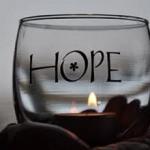In the crisp morning air, day breaks to the sound of a diesel engine idling as the high school kids get on the school bus. It will be back again in an hour and a half to pick up the elementary kids. The wheels on the bus go round and round, getting kids where they need to go. The long, hot nights of summer have given way to fresh, bright mornings. It’s back to school in Walltown.

I think of my friend and mentor, “Grandma Ann,” who organized Walltown and other neighborhoods like it through the 1960’s and was invited to co-chair the city-wide process that integrated our public schools. The other co-chair was a man named C.P. Ellis, the local leader of the Ku Klux Klan at that time. They were bitter enemies whose tempers had flared through many a hot summer night of civil rights struggle. But, somehow, in those early morning office hours, co-chairing a process that neither of them entirely believed in, they became friends. “We started listening to the children,” Ann says. “And we realized that all our fighting wasn’t helping them one bit.”
The wheels on the bus go round and round Durham because people like Ann and C.P. helped this community imagine an integrated future. But the truth is, bussing did not fix our race problem. People moved. Private schools opened. Economic inequalities continued. Our racial wounds were not healed by the meetings that Ann and C.P. chaired. But we did glimpse a vision of a better Durham, a place more like the kingdom of God.
In a more peaceful neighborhood, that vision might be a dream to celebrate and pass on to our kids once a year on MLK Day–something to sing about on Sundays. But here in Walltown, our need for beloved community feels more urgent. This long, hot summer, we saw over a dozen of the young men who were kids when we came here a decade ago rounded up and carried off to jail in a concentrated “drug bust.” (Almost none of them were convicted, but most spent weeks in jail.) At summer camp, the teenagers spoke frankly about why gang life seems more viable to them that most of the available options. (Why risk your life fighting for a country that doesn’t care about you when a guy in your neighborhood is willing to give you a job and gun—no boot camp required?) Almost every day, young kids—6 to 10 year-olds—came by the house asking for a snack. What they didn’t say (but could have) was, “I haven’t eaten since I woke up. I’m hungry.”
All of this was on my mind last night as we hosted orientation for our Walltown Aspiring Youth (the WAY). I talked to Shamaia, Dante and Junior’s mom who I’d never met because she’s in class when they come to church on Wednesday nights. Across the room, I saw the three youngest kids from a refugee family that resettled across the street from Rutba House eight years ago. The youngest—the only one born here in the US—is in my son’s class this year. His older brother is on a WAY team.

A few more familiar faces trickled in, but I was drawn to the ones I didn’t know. I introduced myself to a friendly-faced abuelita, a woman who told me that she’s lived about a block and a half from me for the past six years. This is the first time we’ve met. “I go to work and come home, to work and come home,” she says with a smile. But we are here, together, because she cares about her grandson. Across the room, another grandma walks in. This one is white and lives across the street from me. We wave to each other most days. But this is the first time we’ve sat, balancing paper plates on our laps, eating grapes and chips and talking about our kids.
Years ago, when we were first starting School for Conversion, I sat down with Grandma Ann and asked if she would teach me to organize. “It’s simple,” she said. “Find out what people want and start helping them get it. When you get half-way to what they want, tell them what you want.”
No, we’re not where we want to be yet. But last night, sitting here with those families and thinking about the year ahead, it felt like we might be about half-way there with these kids. Black, white, and Latino, they signed on to say that they want to do well in school and in life. What’s more, they want to do it together. Half-way toward their goal, I realize that it is mine, too. We all want a neighborhood where everyone can flourish—a society where it is easier to be good. I want it for these kids, and I want it for my kids, too.
If any of us are going to truly have what we want, we’ll have to have it together. Which is to say, we’ll have to become a community. And this, I suspect, is the most important thing that’s happening here. It’s why there’s nowhere else I’d rather be.
I wish you could have been there with us last night. It was the sort of evening that makes you want to shout love from the roof tops—to tweet it to the world. At the very least, I got to get up this morning and write it down for you. What’s more, the good folks at the Giving of Life Foundation have created an online forum for you to share the good news that we’re seeing here while also doubling any donations we receive toward the WAY in the next two weeks. Hope you’ll check it out, and help us spread the word.











